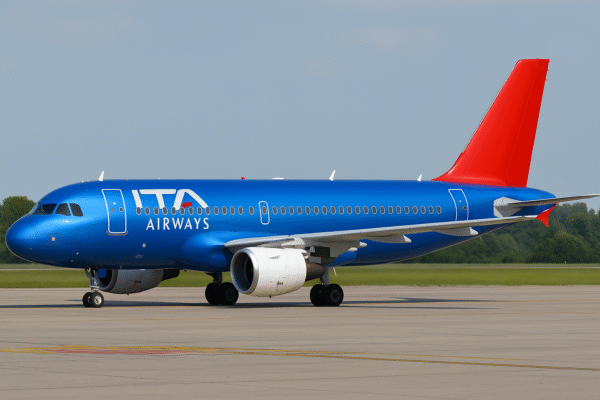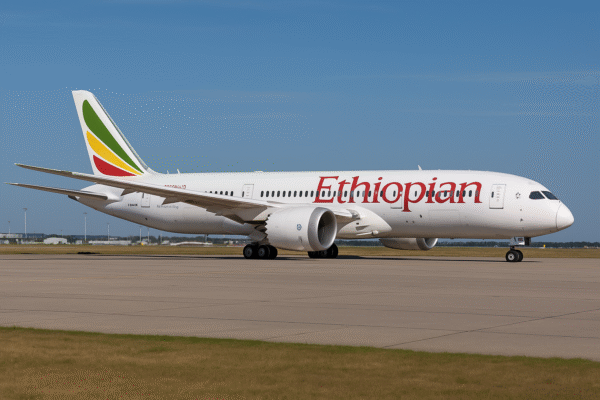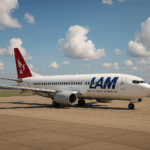Ethiopian Airlines Deepens Aviation Ties by Leasing Aircraft to Russia Amid Global Fleet Shortage
In a bold move that underscores the changing dynamics of international aviation, Ethiopian Airlines is reportedly in advanced negotiations to lease several aircraft to Russian carriers. This potential partnership, bridging the African and Eurasian continents, could significantly ease Russia’s current commercial aviation challenges while enhancing the global presence of Africa’s aviation giant.
As international sanctions continue to limit Russia’s access to Western aircraft leasing, spare parts, and maintenance services, Russian airlines are increasingly turning to partners outside traditional Western networks. Ethiopian Airlines, a leader in African aviation with a long-standing reputation for resilience and innovation, is emerging as a practical and strategic partner.
🌐 Aviation Under Pressure: Why Russia Needs Alternatives
Following the imposition of global sanctions in response to geopolitical conflicts, Russian carriers have struggled with grounded fleets, lack of aircraft servicing, and reduced access to leasing contracts. Many Western aircraft lessors have exited the Russian market, leaving airlines scrambling for ways to maintain domestic and limited international operations.
To ensure travel continuity and maintain route viability, Russian aviation authorities are exploring collaborations with airlines in regions not bound by Western restrictions. This includes countries in Africa, Asia, and the Middle East.
✈️ Why Ethiopian Airlines is the Ideal Partner
Ethiopian Airlines, headquartered in Addis Ababa, is widely recognized as Africa’s largest and most profitable carrier. It boasts a growing fleet of more than 140 aircraft and has won multiple international awards for service excellence and operational reliability. The airline’s experience in ACMI (Aircraft, Crew, Maintenance, and Insurance) leasing arrangements—especially during global disruptions like COVID-19—makes it well-positioned to support other carriers in crisis.
Leasing aircraft to Russia would involve deploying Ethiopian-operated planes under Russian airline branding or routes. This model, common in global aviation, allows airlines to maintain or expand services without buying new aircraft or facing maintenance bottlenecks.
🛫 What Travelers Need to Know
While the behind-the-scenes agreements may seem remote to the average passenger, the effects of such collaborations can be very real:
- Stable Flight Schedules: Leasing boosts fleet capacity, reducing cancellations or reroutes due to aircraft shortages.
- Route Continuity: Popular routes like Moscow to domestic Russian cities or international destinations like Addis Ababa may see increased frequency.
- Safe Operations: All leased aircraft remain under Ethiopian Airlines’ operational control, ensuring adherence to international aviation safety standards, as governed by ICAO and IATA treaties.
Travelers may board an aircraft maintained and crewed by Ethiopian Airlines, while the flight is sold by a Russian airline—a seamless, safe, and industry-standard approach.
🌍 Bridging Continents: A New Era of Aviation Diplomacy
This potential leasing arrangement is more than a logistical decision—it’s a symbol of how global air travel is evolving. Cross-border collaborations are becoming vital as traditional aviation networks face economic and political disruption.
Ethiopian Airlines’ willingness to support a major European power reflects both its growing confidence and the shifting balance of aviation influence. The partnership would not only enhance connectivity for Russian travelers but also bolster Ethiopian Airlines’ global positioning.
Additionally, such a move underscores Ethiopia’s ambitions to make Addis Ababa Bole International Airport a major global transit hub, rivaling Dubai, Doha, and Istanbul.
🔮 Looking Ahead: Strategic Alliances in the Skies
If finalized, this deal could mark the beginning of broader aviation cooperation between Africa and Eurasia. As global supply chains continue to shift, regional powers like Ethiopia and Russia are increasingly building parallel networks of collaboration that bypass Western-centric aviation systems.
This could mean more ACMI leasing deals, co-branded routes, joint maintenance hubs, or even training collaborations between Russian and Ethiopian aviation academies.
There is also an economic ripple effect: increased demand for aircraft leasing, maintenance services, and international cooperation could foster job creation and tourism growth in both regions.
📍 Geo-Tagged Insight:
- Ethiopia: Home to Africa’s busiest airline and one of the continent’s most modern airports (Addis Ababa Bole International).
- Russia: Facing one of its most challenging periods in civil aviation due to fleet grounding and isolation from Western leasing networks.
- Moscow–Addis Ababa Route: A strategic corridor that may benefit from the new aircraft deployments.
✈️ The Bottom Line: Global Travel, Powered by Trust and Strategy
While most passengers simply look for affordable fares and timely departures, the Ethiopian Airlines-Russia aircraft leasing deal reflects the immense strategic coordination required to keep planes in the sky.
These developments remind us that international travel relies not just on machines and runways, but on trust, flexibility, and shared resilience. Ethiopian Airlines is not only delivering passengers across continents—but helping shape the future of global aviation.
For more travel news like this, keep reading Global Travel Wire





















